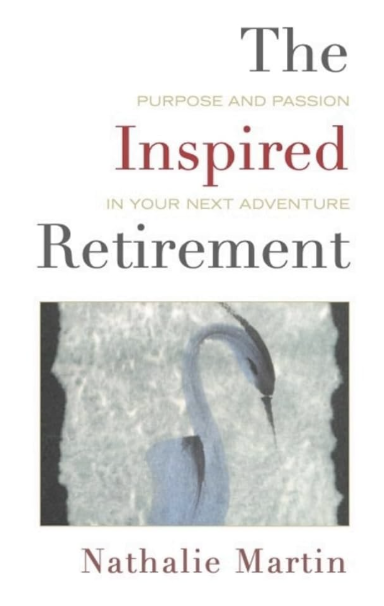by Nathalie Martin
I once worked with a client who found himself perplexed four years into retirement. He had been very successful and achieved financial security, and decided to step out of the fast lane. His former colleagues were envious of his new active, and fun retirement life. On paper, he had everything he wanted – and even had ever dreamed of. But one day he said, “Something is missing, and I can’t quite put my finger on it.” It was inspiration.
Could your retirement planning use some inspiration? In a culture obsessed with financial planning for retirement, we often overlook thinking through what will ultimately determine our happiness in our post-full-time work era. Author Nathalie Martin, a law professor at The University of New Mexico, offers a refreshing perspective that will inspire you to create meaning in the years ahead.
Martin introduces us to the “three plagues of aging”—a concept from physician Atul Gawande’s seminal work “Being Mortal – boredom, loneliness, and dependence. She notes that they don’t have to be inevitable companions to growing older, but they require intentional effort to combat.
Beyond the Financial Three-Legged Stool
While most retirement planning naturally focuses on the three-legged stool of financial stability (Social Security, savings, and pensions), Martin proposes an equally important non-financial holistic framework built on three pillars: purpose, well-being (mental, physical, and spiritual), and joy.
A striking story in the book introduces readers to the “paper chain lady”—a high-level school administrator who spent two years excitedly counting down each day to retirement, only to wake up the day after her retirement party asking herself, “What have I done?” This cautionary tale underscores that while financial planning is essential to get to retirement, a different type of planning is needed to thrive in retirement.
The Art of Prioritization
A valuable tool Martin highlights is a prioritization exercise inspired by UCLA behavioral economist Shlomo Benartzi. Rather than creating endless wish lists for retirement, the exercise involves identifying nine broad life objectives and then—and here’s the challenging part—ranking them in order of importance.
Martin shares her results of her prioritization, which revealed some surprising insights. Her top priority wasn’t travel or hobbies, but “being physically healthy enough to remain independent.” Her second priority focused on living in the present moment with her husband, and “always having a dog” ranked higher than living in her own home or continuing to work. This exercise is useful in facilitating honest conversations about what truly matters most when resources—whether time, money, or energy—aren’t unlimited.
The Power of Practices
Martin recommends mindfulness practices not as a way to escape from reality, but as a way to engage more deeply with it. These practices—whether meditation, yoga, mindful walking, or simply slowing down—help reduce stress, improve cognitive functioning, and help to discover what brings meaning and purpose to our lives.
Research by Becca Levy at Yale is compelling: developing a positive mindset about aging can add seven and a half years to your life. Intentionally cultivating joy, staying open to new possibilities are wise investments.
A New Vision for Retirement
Martin’s ultimate message is encapsulated in a clever tagline: “Step out of the fast lane and into the vast lane.” Retirement isn’t about coming to a screeching halt; it’s about expanding into a broader, more contemplative way of living.
The most successful retirees aren’t necessarily those with the biggest nest eggs, but those who’ve thoughtfully considered what will bring them purpose, sustain their well-being, and build active and thoughtful daily lives. Nathalie Martin’s book will inspire you to create a version of retirement life that you’ll find fulfilling and meaningful.
__________________________
Listen to my podcast conversation with Nathalie Martin
Explore The Retirement Wisdom Podcast

